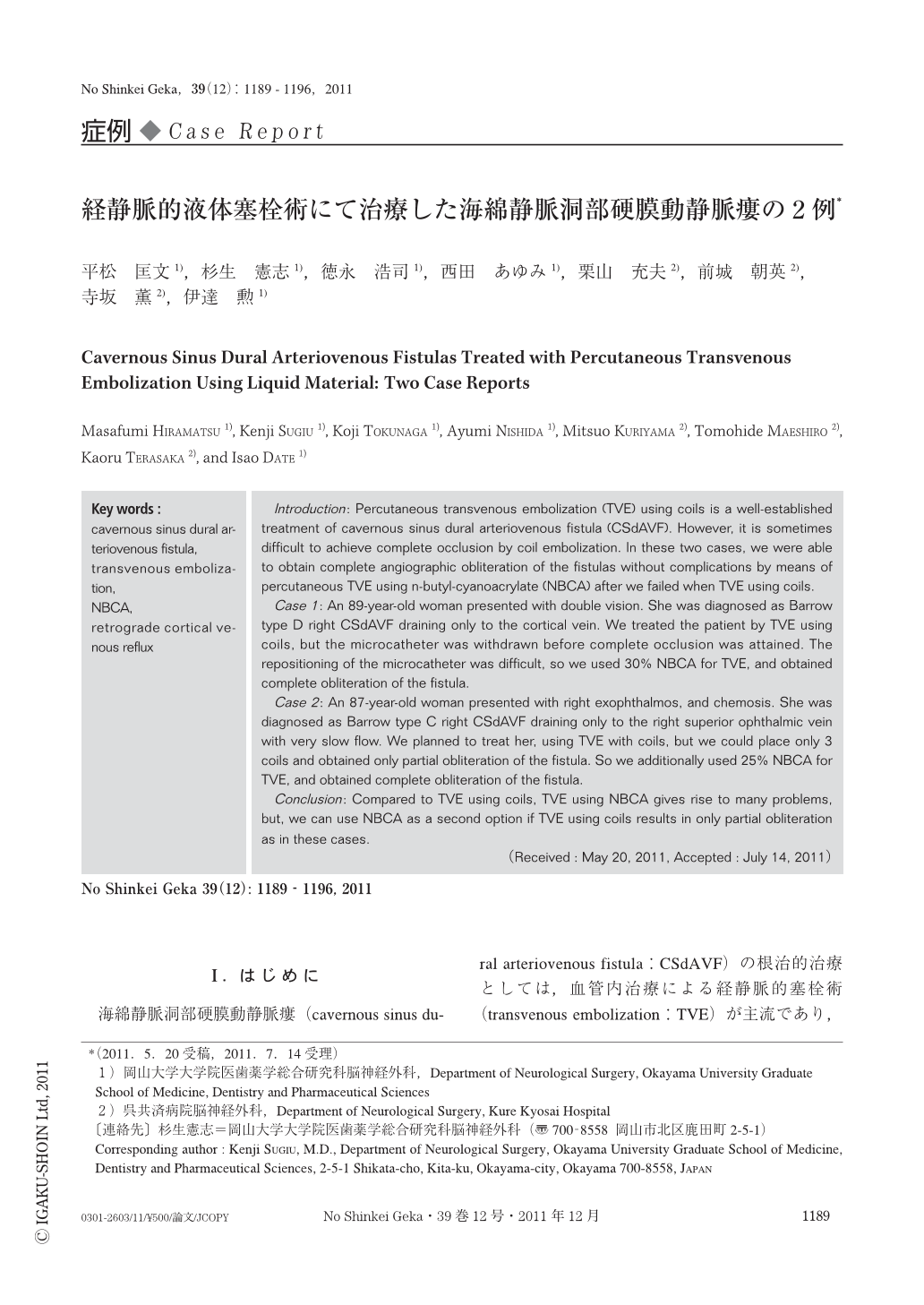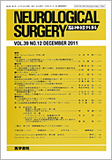Japanese
English
- 有料閲覧
- Abstract 文献概要
- 1ページ目 Look Inside
- 参考文献 Reference
Ⅰ.はじめに
海綿静脈洞部硬膜動静脈瘻(cavernous sinus dural arteriovenous fistula:CSdAVF)の根治的治療としては,血管内治療による経静脈的塞栓術(transvenous embolization:TVE)が主流であり,使用する塞栓物質としては,コイルが頻用されている3-5).今回われわれは,CSdAVFに対するTVE中に,コイルのみでは不完全閉塞に終わりそうな状況となり,緊急避難的に液体塞栓物質n-butyl-cyanoacrylate(NBCA)を経静脈的に注入することにより,合併症を来すことなく根治が得られた2症例を経験したので報告する.
Introduction: Percutaneous transvenous embolization (TVE) using coils is a well-established treatment of cavernous sinus dural arteriovenous fistula (CSdAVF). However,it is sometimes difficult to achieve complete occlusion by coil embolization. In these two cases,we were able to obtain complete angiographic obliteration of the fistulas without complications by means of percutaneous TVE using n-butyl-cyanoacrylate (NBCA) after we failed when TVE using coils.
Case 1: An 89-year-old woman presented with double vision. She was diagnosed as Barrow type D right CSdAVF draining only to the cortical vein. We treated the patient by TVE using coils, but the microcatheter was withdrawn before complete occlusion was attained. The repositioning of the microcatheter was difficult, so we used 30% NBCA for TVE, and obtained complete obliteration of the fistula.
Case 2: An 87-year-old woman presented with right exophthalmos, and chemosis. She was diagnosed as Barrow type C right CSdAVF draining only to the right superior ophthalmic vein with very slow flow. We planned to treat her, using TVE with coils, but we could place only 3 coils and obtained only partial obliteration of the fistula. So we additionally used 25% NBCA for TVE, and obtained complete obliteration of the fistula.
Conclusion: Compared to TVE using coils,TVE using NBCA gives rise to many problems,but,we can use NBCA as a second option if TVE using coils results in only partial obliteration as in these cases.

Copyright © 2011, Igaku-Shoin Ltd. All rights reserved.


